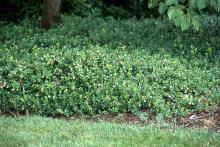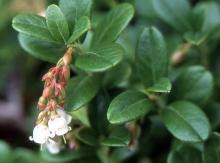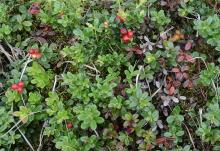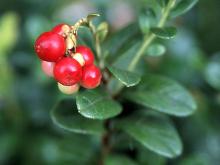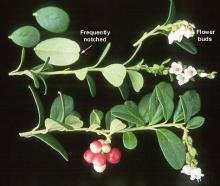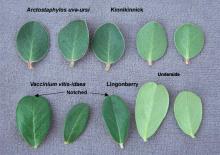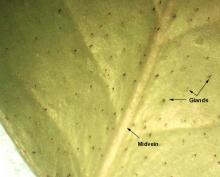Vaccinium vitis-idaea
Common name:
Cowberry
Lingonberry
Pronunciation:
vak-SIN-ee-um VI-tis-i-DE-a
Family:
Ericaceae
Genus:
Type:
Broadleaf
Native to (or naturalized in) Oregon:
No
- Evergreen ground cover, 6-12 inches (15-30 cm). Spreads by underground runners. Leaves alternate, oval to obovate, 0.9-2.5 cm long, often notched at apex, leathery, lustrous green upper, lower surface spiked with brown/black dots (glands). Small bell-shaped flowers are white to pink in spring, borne terminally. Fruit dark red, 1 cm diam., edible, acid to taste.
- Sun to part shade, but does well in moist peaty soil in full sun.
- Hardy to USDA Zone 5 It is native to boreal forests and Arctic tundra throughout the Northern Hemisphere, from Europe and Asia to North America.
- V. vitis-idaea var. minus is actually the Lingonberry of commerce, it is lower growing and hardier (USDA Zone 2).
- vitis-idaea: grape (vitis) of Mt. Ida (the highest mountain of the island of Crete)
- Oregon State Univ. campus: near southeast entrance to Ag. and Life Sciences.

